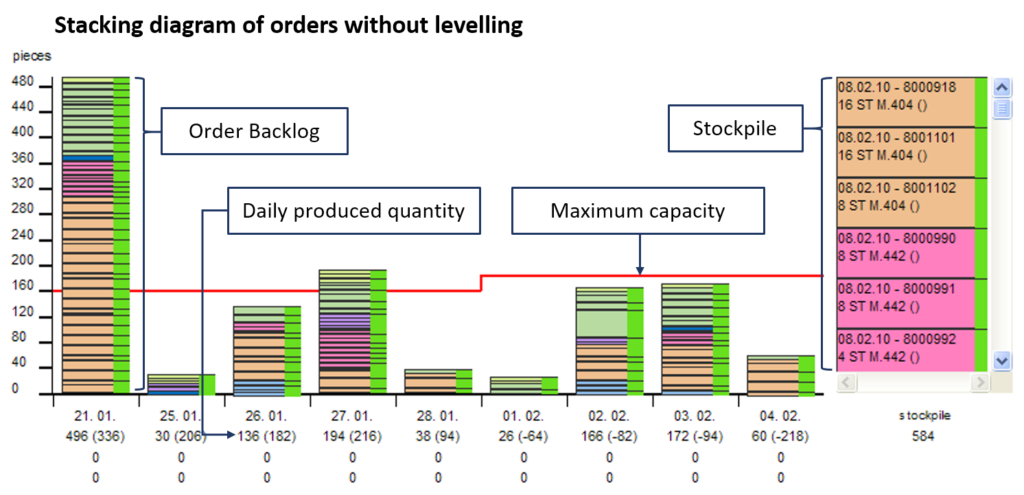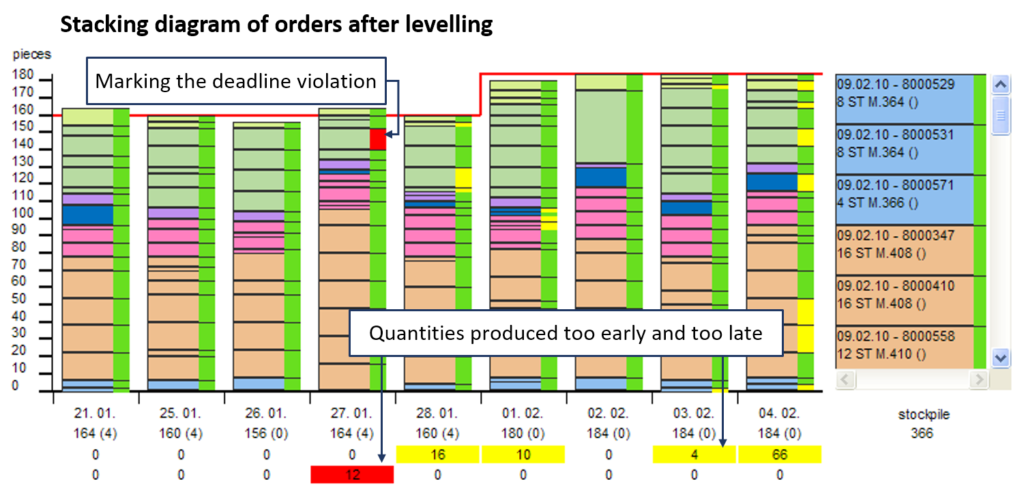Production levelling and smoothing software
Using the LEAN approach to avoid overproduction and reduce inventories and capital tie-up
The market is increasingly shaped by the need for a wide range of variants and a production that is as customised as possible. In addition, customers expect the most favourable prices possible and the goods to be available at all times and to be delivered on short notice. With decreasing batch sizes and a tendency towards make-to-order production, batch production with large batch sizes, which is strongly designed to reach economic key figures in the sense of mass production, is reaching its limits.
Production levelling and smoothing: The method of ensuring optimal resource utilisation while keeping a high levels of variation
Levelling and smoothing describes measures aimed at balancing the input (delivery times, procurement quantities, delivery dates) and output (demand, sales promotions, seasonalities) fluctuations caused by the requirements described, while serving the customer demand at all times.
In contrast to the LEAN approach of levelling and smoothing, traditional production management philosophies (Taylorised production) build upon high (minimum) inventories and raw parts, semi-finished products and dispatch warehouses which are kept to break waves (so called “breakwaters” function).In addition to the negative bullwhip effect – which leads to an incorrect, at best delayed information flow along the internal (and external) supply chains in the case of short-term demand adjustments, and thus results in ever raising safety stocks –, this also contributes to high capital tie-up and storage costs.
Measures and goals of production levelling and smoothing
In levelling and smoothing, production quantities are split into small batches to date formats (usually of one day). This needs to reduce set-up times and a certain standardisation and repetition rate (clocking) of work steps is mandatory
Differentiation between the terms levelling and smoothing
The following objectives are pursued through production levelling and smoothing
- Regular production of constant quantities
- Harmonisation of the production flow
- Uniform capacity requirements and balancing without over- and under-utilisation and additional capacity requirements
- Avoidance of waiting lines in front at individual workstations
- Reduction of throughput times
- Increase of the quality level
- Reduction of capital tie-up in stocks
- Constant and plannable consumption of input materials
Levelling and smoothing with ORSOFT Manufacturing Workbench
As a powerful tool of advanved planning and scheduling, the ORSOFT Manufacturing Workbench (MWB) can also be applied in the field of production levelling and smoothing. The software can be used to arrange a number of jobs to meet a trade-off of the following target criteria:
-
-
- Best possible utilisation of capacity
- Meeting customer deadlines
- Keeping production sequences
- Optimal sequencing of set-up times
- Inclusion of the proportions of order groups
-
Customer-specific parameter settings and combinations as well as prioritisation rules can be stored in the software as target criteria to partially automatize levelling or smoothing proposals. All functionalities are modelled on the data structures and concepts of SAP® ERP without changing any SAP® standards.


